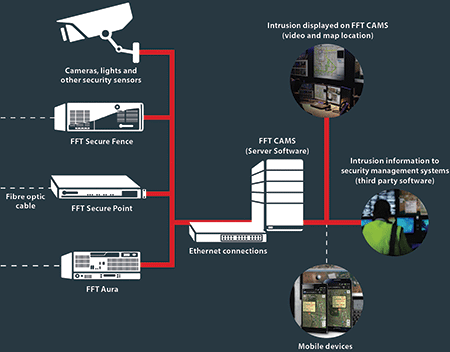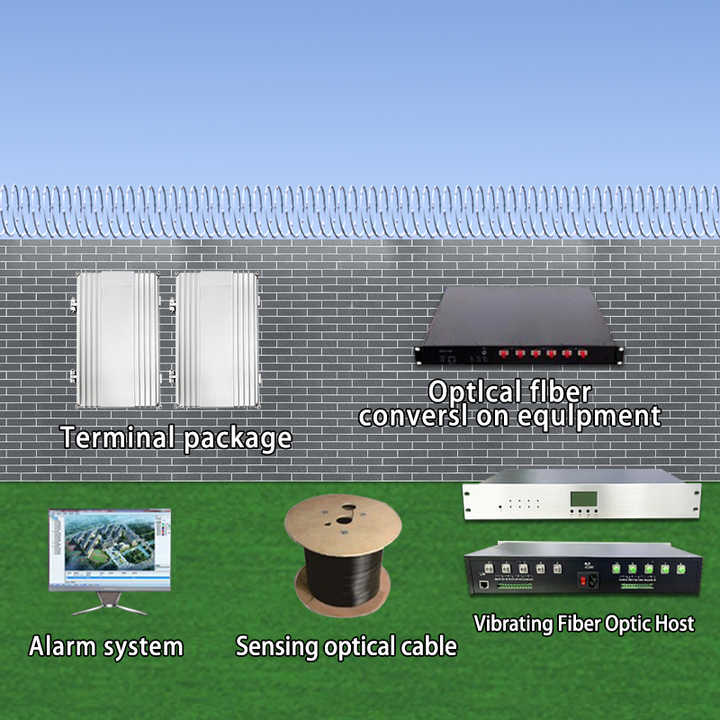How Fiber Security Helps Prevent Unauthorized Access and Improves Surveillance
Wiki Article
Improve Your Safety And Security With Advanced Fiber Optic Safety And Security Equipments
In a period where safety is vital, innovative fiber optic safety systems offer a compelling solution for improving security across various environments. What effects do these advancements hold for future safety and security procedures?Advantages of Fiber Optic Security
Using the benefits of fiber optic technology dramatically enhances safety systems across different applications. Among the key benefits is the raised bandwidth capacity, permitting the transmission of large amounts of information at high speeds. This is especially crucial for real-time video monitoring, where high-resolution feeds can be sent out without latency, guaranteeing instant reaction capabilities.Additionally, optical fiber exhibit premium resistance to electromagnetic disturbance, which is crucial in environments with prospective signal disruptions. This dependability makes sure regular efficiency in vital safety operations. Fiber optic wires are much less prone to tapping and unapproved gain access to compared to typical copper circuitry, thus boosting data stability and confidentiality.
Another remarkable benefit is the longevity of fiber optic systems; they are a lot more resistant to environmental elements such as dampness, temperature level changes, and destructive substances. This durability equates to lower maintenance expenses and longer life-spans for safety installations.
Last but not least, the lightweight nature of fiber optic cords helps with simpler installation and transmitting, especially in complex frameworks (fiber optic security system). Inevitably, the assimilation of fiber optic modern technology right into safety systems not just bolsters security procedures yet likewise maximizes operational effectiveness
Secret Features to Consider
When examining fiber optic safety systems, a number of crucial attributes have to be taken into consideration to make sure optimum performance and effectiveness. First, examine the system's detection variety and level of sensitivity; a comprehensive variety allows for checking huge locations, while high level of sensitivity makes sure that also minor disruptions are found quickly.Next, consider the assimilation capabilities of the system. A fiber optic protection system need to flawlessly interface with existing safety measures such as video cameras and alarm systems, producing a cohesive safety and security network.
Longevity and ecological resistance are also critical attributes. Ensure that the system is created to withstand severe weather condition conditions and prospective physical hazards, as this will lengthen its operational life expectancy.

Last but not least, explore the scalability of the system. A durable fiber optic protection system need to be quickly expandable to suit future requirements without significant overhauls. By carefully taking into consideration these attributes, you can pick a fiber optic protection option that boosts safety and security in your environment.
Installment Process Overview
To efficiently Clicking Here apply a fiber optic safety system, a methodical installment procedure is important. This process begins with a thorough site evaluation to identify the particular security demands and to identify ideal locations for fiber optic wires and protection gadgets. Following this assessment, the installation team will establish an in-depth strategy, including cable television paths, necessary tools, and conformity with neighborhood policies.Next, the installment entails laying the fiber optic cables, guaranteeing they are secured from ecological elements and physical damage. Appropriate handling methods are crucial, as fiber optic wires are delicate and can be easily damaged. After the cabling is set up, adapters and terminations are meticulously completed to ensure signal integrity.
The succeeding phase includes setting up security gadgets such as cameras, motion detectors, and alarm system systems, all incorporated with the fiber optic network. Extensive testing is performed to verify that all parts are functioning correctly and to make sure optimum performance.

Comparing Fiber Optic to Typical Systems
The evolution of safety and security innovation has resulted in considerable innovations in the contrast between fiber optic systems and typical copper-based systems. Fiber optic systems utilize light to transmit data, using superior bandwidth and speed contrasted to their copper counterparts. This results in boosted data transmission capacities, making fiber optics optimal for high-resolution video clip monitoring and my review here real-time tracking.In addition, fiber optic cords are immune to electromagnetic disturbance, lowering the probability of signal deterioration created by outside factors. This characteristic makes sure constant efficiency, also in challenging settings. In contrast, standard copper systems are more at risk to interference, resulting in possible vulnerabilities in safety applications.
Sturdiness is another benefit of fiber optic systems. They are less prone to harm from environmental factors such as wetness and temperature level fluctuations, which can jeopardize copper electrical wiring. Furthermore, fiber optics are lighter and thinner, permitting simpler setup and lowered physical impact.
Nonetheless, typical systems often tend to have reduced preliminary expenses, making them attractive for budget-conscious tasks. While fiber optic systems might need a higher ahead of time financial investment, their long-lasting benefits-- such as reduced upkeep prices and higher integrity-- typically surpass the first expenditure, positioning them as a premium option for contemporary safety and security needs.
Future Patterns in Security Innovation
Emerging patterns in safety and security innovation are poised to change the landscape of security and hazard detection - fiber optic security system. As companies increasingly deal with innovative threats, advancements such as synthetic knowledge (AI) and artificial intelligence (ML) are ending up being indispensable to safety systems. These modern technologies boost the capacity of fiber optic systems by enabling real-time data analysis, identifying abnormalities, and automating feedbacks to possible breachesIn addition, the assimilation of the Net of Points (IoT) is changing protection structures. IoT tools can supply extensive situational recognition and help with seamless interaction between various safety and security components. This interconnectedness permits much more effective tracking and faster event response times.
Biometric verification is likewise acquiring momentum, offering a higher degree of protection via special physical characteristics. As this modern technology develops, it is most likely to be included into fiber optic systems for enhanced gain access to control.
Verdict
Finally, advanced fiber optic safety and security systems represent a significant innovation in security and monitoring modern technology. Their exceptional data transfer, resistance to disturbance, and resilience help with reliable surveillance and data honesty. As these systems integrate AI and that site IoT capabilities, they enhance the general protection structure, making certain durable security for possessions. The transition from traditional systems to fiber optic services shows a growing pattern in the direction of extra efficient and reliable protection steps in a progressively complicated technological landscape.Report this wiki page